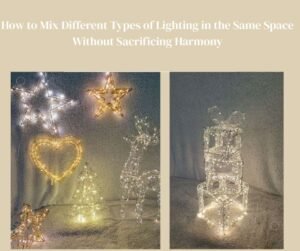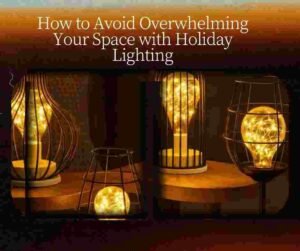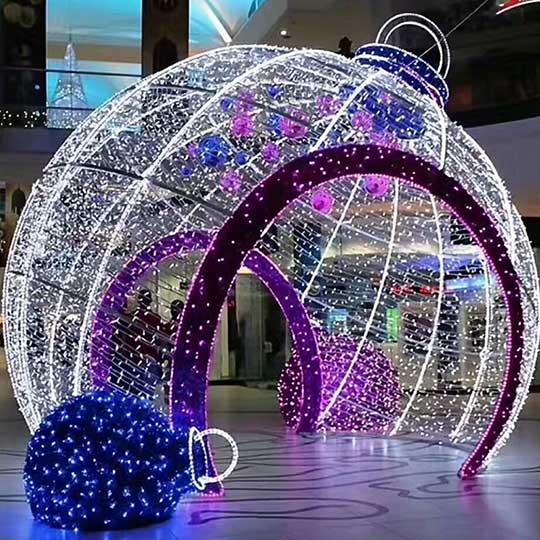Meta Description: Source the perfect Infinity Lights for your business! This guide covers LED strip quality, mirror types, frame materials, sizing, environment, and lead times – essential info for wholesale Infinity Light buyers. Get a quote from ChangXinLighting today!
Thinking about adding the mesmerizing glow of Infinity Lights (also known as Infinity Mirrors or Endless Mirror Lights) to your inventory? They’re hot right now, and for good reason! But with so many options popping up, it’s easy to get lost in the details (and potentially make a costly mistake). This guide is here to help you avoid the pitfalls and make a smart purchase.
Let’s be honest: Not all Infinity Lights are created equal. The biggest potential headaches come down to LED strip quality, mirror material, frame construction, and lead times. Understanding these factors is crucial for a smooth buying experience.
I’m writing this from the perspective of an experienced Infinity Lights manufacturer, sharing my firsthand experience to help you make informed decisions. Let’s dive in!
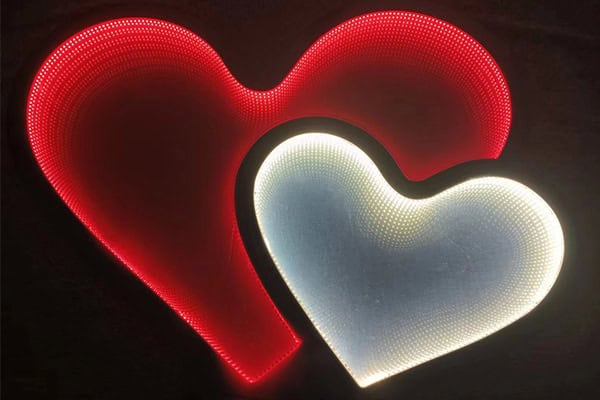
Infinity Lights #Infinity Mirrors #Endless Mirror Lights #wholesale Infinity Lights #ChangXinLighting #Buyer’s Guide #Infinity Lights manufacturer #bulk Infinity Lights
H2: Are LED Strip Failures a Common Problem with Infinity Lights?
You’ve probably had bad experiences – Infinity Lights that suddenly stop working, flicker, or just don’t light up evenly, leading to a variety of after-sales issues. This is often due to dreaded LED strip failures.
Here’s the deal: Many Infinity Lights, especially smaller-batch orders, rely on hand-soldered multi-color LED strips. Human hands, as skilled as they are, aren’t perfect. We sometimes see issues like cold solder joints or missed connections. This can lead to intermittent breaks in the circuit, causing those frustrating on-again, off-again problems. Another common issue is using a PCB board that is too thin or of low quality.
Manual Soldering strip lights 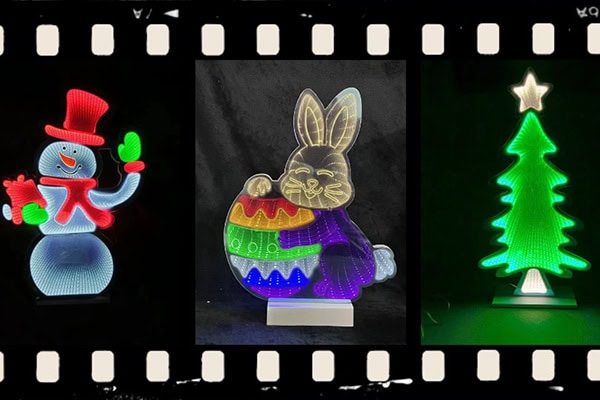
H3: How Can You Minimize This Risk When Buying Infinity Lights?
It’s not all doom and gloom! There are steps you can take to protect yourself:
- Production Control: For larger orders, we can often use machine-assembled LED strips, eliminating the need for manual splicing of colors. This drastically reduces the defect rate. (Of course, this isn’t always feasible for very small quantities. Ask your Infinity Lights supplier about this.)
- Sample Testing: Always request samples before placing a large Infinity Lights order. Light them up for an extended period, gently shake the unit, and carefully observe the light output. Communicate your quality expectations clearly to the manufacturer.
- Solid Warranty & Support: Choose Infinity Lights suppliers with a proven track record, excellent reviews, and a strong after-sales support system. A good warranty is your safety net.
| Strategy | Description |
|---|---|
| Proactive (Before Order) | Request samples, test thoroughly, communicate clear expectations, choose reputable suppliers with warranties. |
| Reactive (After Issue) | Utilize warranty, contact supplier for support/replacement. |
H2: What About Adhesive Failure (The Dreaded Peeling) in Infinity Mirror Lights?
Over time, you might notice the LED strip starting to separate from the frame of your Infinity Mirror Light. It looks bad, and in severe cases, the strip can completely detach.
The main culprit? Adhesive aging. All adhesives weaken over time. But beyond just age, the quality of the adhesive and the type of LED strip PCB board used are huge factors. A too-hard, low-quality LED strip is a very likely cause of delamination.
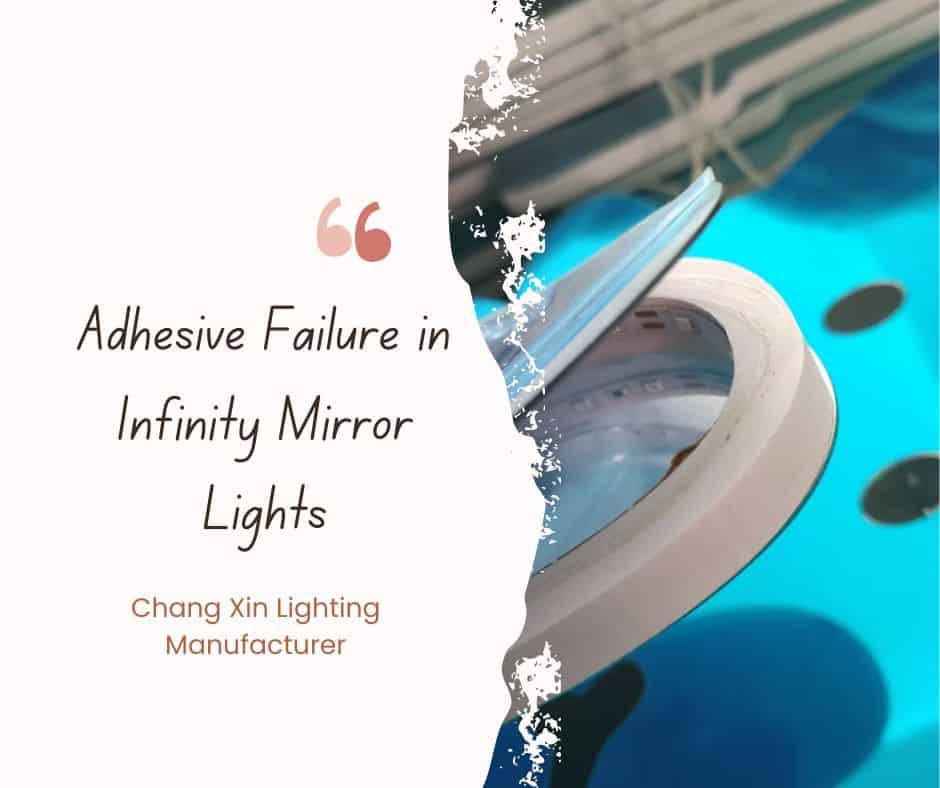 infinity lights adhesive[/caption]
infinity lights adhesive[/caption]
H3: How Can You Reduce the Risk of Peeling in Your Infinity Lights?
While it’s impossible to eliminate aging completely, you can definitely slow it down:
- Ask about the adhesive: Inquire about the specific brand and type of adhesive used by the Infinity Lights manufacturer. High-quality adhesives have better bonding strength and age resistance.
- PCB Board Flexibility: Ask about the LED strip’s PCB board material and flexibility. A more flexible PCB board is less likely to put stress on the adhesive. A board that is too rigid, or too flimsy is a warning sign.
- Environment: Avoid placing Infinity Lights in extreme heat, humidity, or direct sunlight. These conditions accelerate adhesive degradation.
| Factor | Impact on Adhesion |
|---|---|
| Adhesive Type | High-quality adhesives = better bonding and longevity. Inferior adhesives = quicker failure. |
| PCB Board | Flexible PCB = less stress on adhesive. Rigid PCB = more stress, leading to potential peeling. |
| Environment | Extreme conditions (heat, humidity, sunlight) accelerate adhesive aging and increase the risk of peeling. |
H4: Deeper Dive: Why Peeling Really Happens in Infinity Mirrors
Beyond just "old glue," there are two often-overlooked factors:
- Rigid PCB Boards: The PCB board is the backbone of the LED strip. If it’s too stiff, it can’t flex and adapt to minor movements or temperature changes (expansion and contraction). This creates constant stress on the adhesive bond, eventually causing it to fail. Think of it like trying to glue a rigid piece of metal to a flexible piece of plastic – it’s a recipe for problems.
- Low-Quality Adhesive: This is a no-brainer, but it’s worth emphasizing. Cheap adhesive might:
- Lack initial strength: It just won’t hold well from the start.
- Age poorly: It becomes brittle and loses its grip quickly.
- Be incompatible: Some adhesives don’t work well with certain PCB board materials or frame materials.
H2: Infinity Mirror Material: What’s the Best Choice for Your Needs?
The mirror is the heart of the Infinity Light’s visual magic. It directly impacts the light effect and the overall lifespan of the product. You’ll typically find acrylic, PET, and scratch-resistant mirrors, each with its own pros and cons.
Acrylic mirrors can be brittle and prone to cracking. While they offer good light transmission, their durability is a concern. PET mirrors are less likely to break, but they scratch very easily and tend to oxidize relatively quickly (often within 2-3 months), dulling the reflective surface. Once a mirror is oxidized or scratched, it’s game over – you can’t really fix it, and the visual impact is significantly diminished. Scratch-resistant mirrors are a new offering this year, but they come with a higher price tag.
[Mirror Material]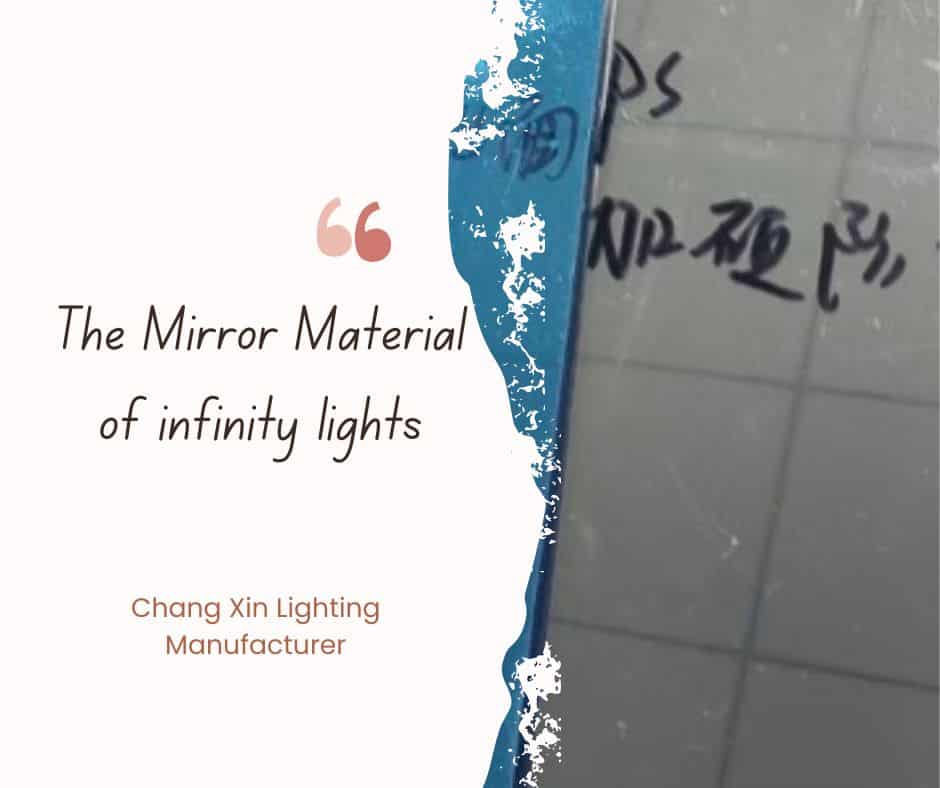 Mirror materilas for infinity lights[/caption]
Mirror materilas for infinity lights[/caption]
H3: Choosing the Right Mirror Material for Infinity Lights
It’s all about balancing your needs, budget, and expectations for the product’s lifespan. There’s no "perfect" material, just the "best fit" for your situation.
| Material | Pros | Cons | Best For |
|---|---|---|---|
| Acrylic | Affordable, good light transmission | Fragile, easily scratched, not heat-resistant | Budget-conscious buyers, low-impact environments, short-term use, or situations where the light is unlikely to be bumped or moved. |
| PET | Shatter-resistant, lightweight, safer | Easily scratched, oxidizes relatively quickly | Situations where safety is a primary concern. |
| Scratch-Resistant | Doesn’t oxidize, better reflectivity, better light transmission, scratch-resistant | More expensive | Customers who prioritize longevity and are willing to pay a premium for a more durable and visually impressive product. |
Beyond the material itself, consider these factors:
- Thickness: A thicker mirror is generally more durable (but also potentially more expensive).
- Surface Treatment: Look for mirrors with scratch-resistant coatings or anti-oxidation treatments. These add extra protection and extend the lifespan.
- Transmittance and Reflectivity: These are the key numbers that determine how well the infinity effect works.
- Transmittance: How much light passes through the mirror. Higher transmittance = brighter light.
- Reflectivity: How much light is reflected by the mirror. Higher reflectivity = stronger, more defined "infinity" effect.
My personal recommendation? I lean towards finding a balance between safety and performance. If your budget allows, go for a PET mirror with anti-oxidation and scratch-resistant coatings. It’s safer than acrylic, and while it costs a bit more, it’ll last longer and maintain its stunning visual appeal. If you’re on a tighter budget, or just want to test the waters with Infinity Lights, standard acrylic or PET can still be a good option.
H2: Infinity Light Frame Material: Which One Holds Up Best?
The frame of an Infinity Light might not be the star of the show, but it plays a vital supporting role. It holds everything together and protects the delicate internal components. You’ll mostly see two frame materials: EVA foam and MDF (medium-density fiberboard). They differ significantly in weight, cost, feel, and durability.
EVA foam frames are lightweight and inexpensive, making the overall Infinity Light more affordable and easier to move around. However, EVA foam can feel a bit cheap, it’s easily deformed, it is not fireproof, and it’s not the most durable option.
MDF frames, on the other hand, are heavier, feel more substantial and premium, and are much more rigid. They offer better protection for the internal LED strips and mirrors. But, of course, they’re also more expensive.
[Support Frame]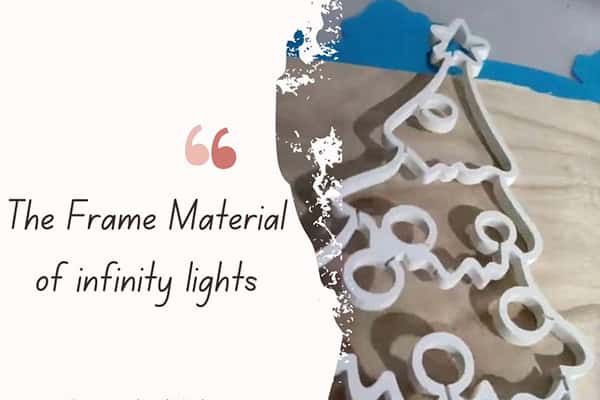 Frame materials of infinity lights[/caption]
Frame materials of infinity lights[/caption]
H3: Choosing the Right Frame Material for Your Infinity Lights
Your choice here depends on your budget, your desired aesthetic, and how the Infinity Light will be used and displayed.
| Material | Pros | Cons | Best For |
|---|---|---|---|
| EVA Foam | Lightweight, affordable, easy to transport, provides some cushioning (protecting internals to a degree) | Feels less premium, easily deformed, not heat-resistant, permanent indentations can occur under pressure | Budget-conscious buyers, those prioritizing portability, and for smaller sizes (under 30cm). |
| MDF | High-quality feel, more stable, less prone to deformation, better durability, better protection for internal components, ideal for larger sizes | More expensive. | Customers who value a premium look and feel, prioritize stability and durability, and are willing to invest a bit more. Keep in dry, ventilated areas. |
H4: Deeper Dive: Frame Material Considerations for Infinity Lights
Beyond the basic pros and cons, keep these points in mind:
- Environmental Friendliness: Both EVA foam and MDF have environmental considerations. Some lower-quality EVA foams can release harmful substances, and MDF can sometimes have issues with formaldehyde emissions. Look for materials that meet relevant environmental standards.
- Manufacturing Quality: The quality of the frame’s construction matters. Precise manufacturing leads to smoother edges, a better finish, and an overall higher-quality feel.
- Overall Design Harmony: The frame’s material and color should complement the overall design of the Infinity Light for a cohesive and visually appealing product.
- Load-Bearing Capacity: For larger Infinity Lights, the load-bearing capacity of the frame is crucial to prevent deformation due to the weight of the light.
Personally, I prefer MDF frames. While they’re heavier and cost more, the improved feel and stability are worth it, in my opinion. They just feel more solid and premium. And, MDF frames tend to be more durable, offering better protection for the Infinity Light. But again, if budget is a primary concern, or for smaller sizes under 30cm, EVA foam is a perfectly viable option.
H2: What Size Infinity Light Should You Choose?
Choosing the right size is a mix of personal preference, technical limitations, and cost. While smaller Infinity Lights (under 60cm) dominate the market, some customers crave larger sizes for a more dramatic visual impact.
Smaller Infinity Lights (under 60cm) are technically easier to manufacture with even light distribution. They’re also more affordable. Larger sizes, while visually stunning, present bigger challenges. It’s harder to achieve uniform brightness across the entire mirror surface because the light source is farther away from some points. Plus, as size increases, material costs, manufacturing complexity, and shipping costs all go way up, leading to a significantly higher price tag.
[Infinity Light Size]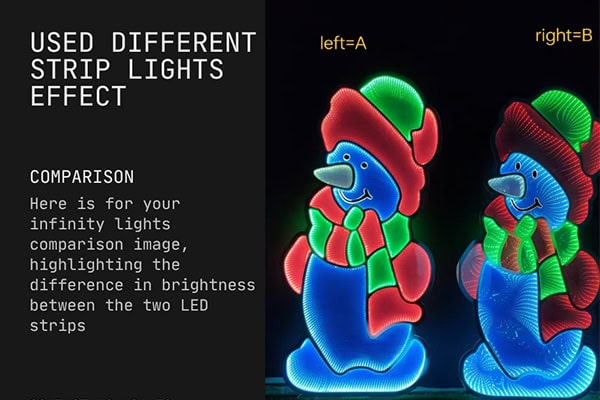 different strip lgihts effect for infinity lights[/caption]
different strip lgihts effect for infinity lights[/caption]
H3: Choosing the Right Size Infinity Light
Consider your display space, budget, personal taste, and desired light uniformity.
| Size Range | Pros | Cons | Best For |
|---|---|---|---|
| Under 60cm | Even light distribution, lower cost, wide selection, convenient to install. | It is a good choice for festivals and home decorations. | |
| 60cm – 100cm | Better visual impact, creates a stronger sense of space | Higher cost, may have some uneven lighting, requires more space for installation | Larger display areas, bigger budgets, users who want a more impactful visual effect. Be careful of tipping; keep in a safe space. |
| Over 100cm | Extremely impactful, creates a stunning visual effect | Very expensive, uniform brightness is difficult to guarantee, installation is challenging, shipping is difficult | Very large display areas, ample budgets, users with a strong desire for a dramatic visual effect. Often used in commercial spaces, showrooms, or as custom pieces. |
H4: Deeper Dive: Size Considerations for Infinity Lights
Beyond the basic size ranges and pros/cons, consider:
- Installation: Different sizes might require different installation methods. Smaller lights can often be placed directly on a surface or hung on a wall, while larger lights might need special stands or mounting hardware.
- LED Strip Layout: To ensure even lighting in larger Infinity Lights, the LED strips need to be arranged in a specific, often more complex, pattern. This adds to the technical challenge and cost.
- Power Requirements: Larger sizes need more LEDs, which means a higher-wattage power supply is required to provide sufficient brightness.
- Heat Dissipation: Larger sizes also mean more heat is generated, and it is necessary to consider whether additional heat dissipation needs to be added.
H2: What Are the Limitations of the Infinity Light’s Environment?
Infinity Lights, as the name suggests, are best suited for indoor environments. While you could technically put them outside, their lifespan and visual performance would be significantly compromised. Outdoor conditions are much harsher and more unpredictable, affecting the various components of the light.
Strictly speaking, Infinity Lights are designed for indoor use. Indoor environments are relatively stable, with controlled temperature, humidity, and light levels. This is ideal for the long-term, stable operation of an Infinity Light. Outdoors, they face sun, wind, rain, dust, and all sorts of other challenges. These factors accelerate aging, leading to mirror oxidation, frame warping, LED strip damage, and ultimately, a diminished visual effect and shorter lifespan.
[Infinity Light Environment]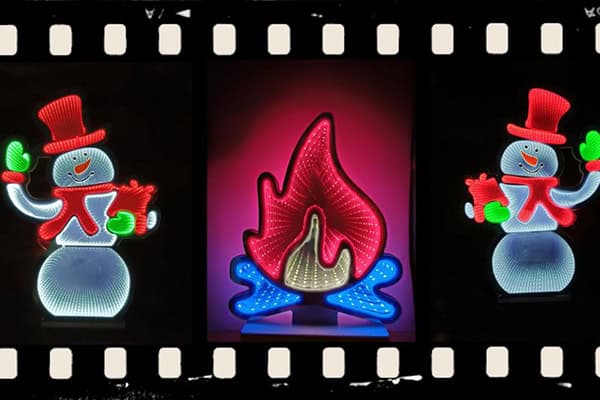 LED infinity lights mfg[/caption]
LED infinity lights mfg[/caption]
H3: Deeper Dive: Environmental Considerations for Infinity Lights
Beyond the basic indoor/outdoor distinction, consider these factors:
- Temperature: Extreme heat or cold can affect the performance of the Infinity Light. High temperatures can overheat the LED strips, accelerating aging or even causing damage. Low temperatures can cause the mirror to fog up.
- Humidity: High humidity can lead to mirror oxidation and corrosion of the circuit boards, affecting the light’s operation.
- Sunlight: Direct, intense sunlight can cause the mirror to fade or discolor, impacting the visual effect.
- Dust: Dust can accumulate on the mirror and LED strips, blocking and scattering light, reducing brightness and clarity.
- Water Resistance: Outdoor rain and snow require the light to have a certain level of waterproof rating.
My personal recommendation is to keep Infinity Lights indoors whenever possible. This maximizes their lifespan and ensures the best possible visual performance.
H2: What Factors Impact Lead Times for Infinity Lights?
We’ve covered the quality details – materials, construction, size, and environment. But for buyers, lead time is another critical factor. Knowing what influences lead times helps you plan your projects effectively and avoid frustrating delays.
The production process for Infinity Lights, while frame and mirror carving is done by machine, is a time-consuming endeavor. In particular, the gas produced during mirror carving, if not handled properly, can be harmful to the environment. Therefore, meeting environmental regulations can also add to the lead time. These are major factors affecting delivery times.
[Infinity Light Lead Time] 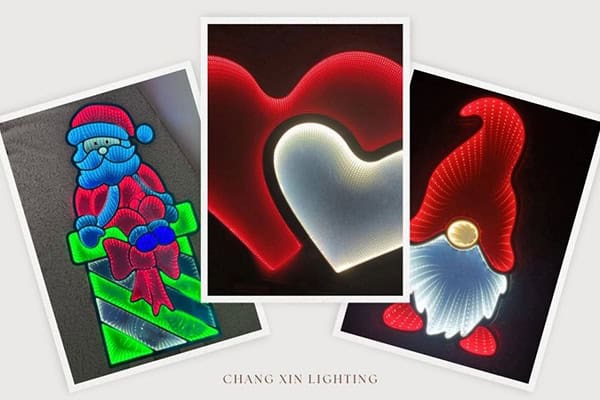 infinity lights supplier[/caption]
infinity lights supplier[/caption]
H3: How to Estimate and Manage Lead Times for Infinity Lights
Understanding the key factors allows you to better estimate lead times and take proactive steps:
| Factor | Description | Mitigation Strategies |
|---|---|---|
| Manual Assembly | Assembly, and other steps, require skilled manual labor and cannot be fully automated. | Communicate with the supplier early to understand their production capacity and order backlog. Allow ample lead time. For urgent projects, consider in-stock options or discuss expedited production. |
| Frame Carving | The frame carving of the Infinity Light is a core part of the production process, requiring meticulous operation and a relatively long time according to the design drawings. | Confirm the design drawings with the supplier in advance. If time is short, you can choose standardized products to reduce the need for customization. |
| Environmental Regs | Mirror carving can produce harmful gases that require treatment to meet environmental standards. Stricter regulations in some areas can increase production time and costs. | Choose suppliers who meet environmental standards and understand their processing time. Communicate with the supplier in advance if your location has strict environmental requirements. |
| Order Quantity | Larger orders naturally take longer to produce. | For large orders, discuss the possibility of phased production and delivery with the supplier. |
| Customization | Highly customized orders require more communication, design work, prototyping, etc., extending the lead time. | Communicate with the supplier as early as possible to clarify design details and production schedules, and allow sufficient production time. If time is short, choose standardized products. |
| Shipping | Different regions and shipping methods (air/sea) significantly impact delivery time. | Plan logistics in advance, allow ample time, and choose the appropriate shipping method. |
H4: Deeper Dive: Other Factors Affecting Lead Times for Infinity Lights
Beyond the main factors, keep these in mind:
- Raw Material Availability: Shortages of specific materials can cause delays.
- Equipment Malfunctions: Production equipment breakdowns can interrupt production.
- Holidays: Factories may close or reduce output during holidays.
- Force Majeure: Unforeseeable events like natural disasters or pandemics can disrupt production and shipping.
- Supplier’s Production Schedule: Different suppliers may have their own production schedules.
H2: Conclusion: Sourcing the Best Infinity Lights
Choosing and sourcing Infinity Lights requires considering multiple factors: size, environment, and lead times. By understanding these elements thoroughly and communicating closely with your supplier, you can find the perfect product and ensure a smooth, successful project. Contact ChangXinLighting today for a quote on wholesale Infinity Lights!

